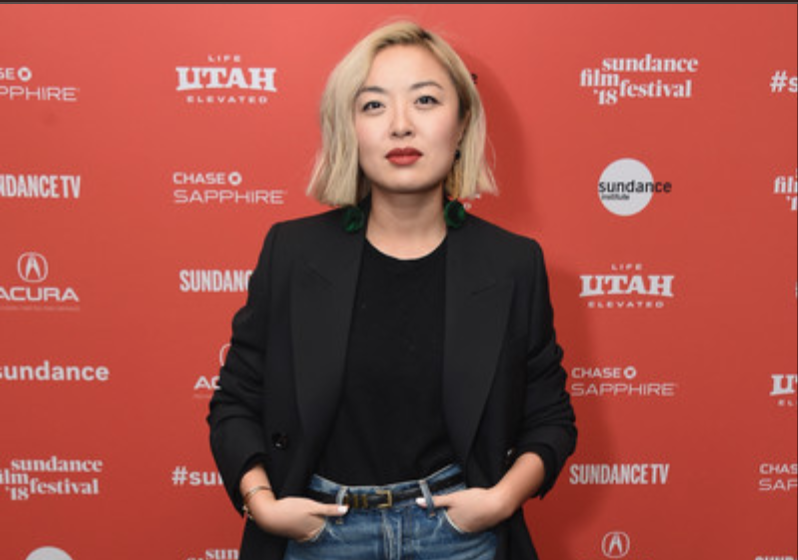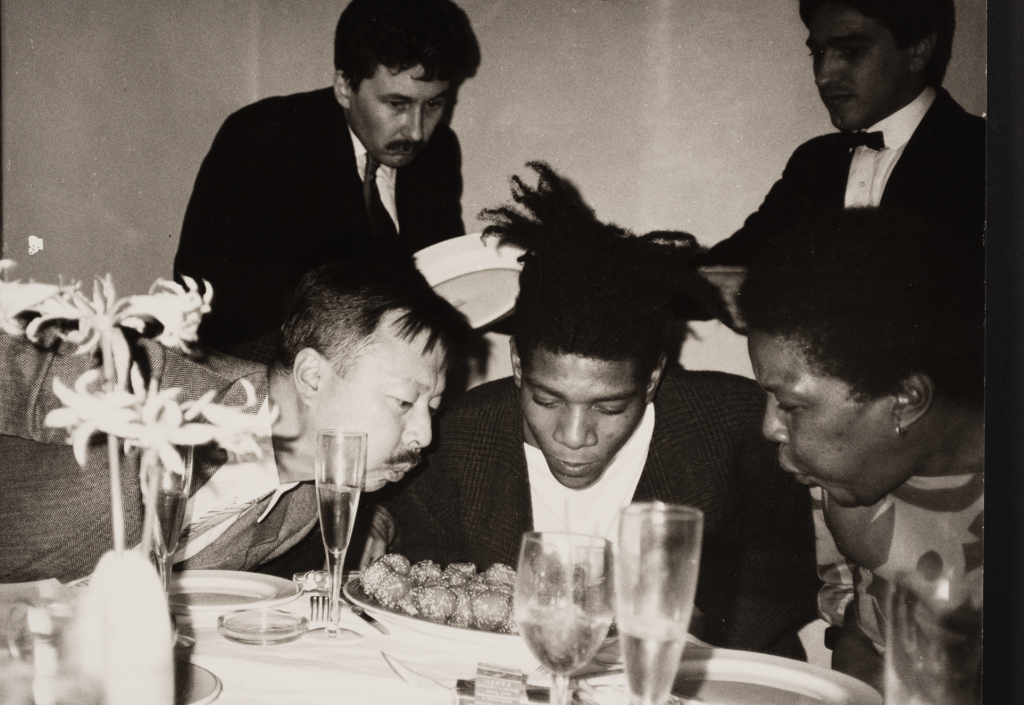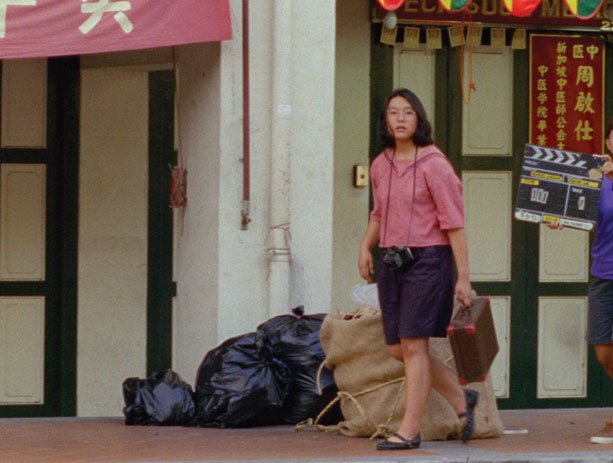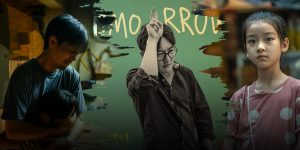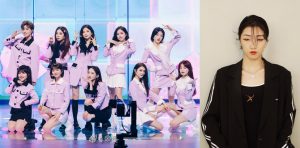Photo Credit: Center for Asian American Media, Warner Bros. Entertainment Inc.
Author Kevin Kwan’s glamorous ode to Singapore and authentic Asian representation in Hollywood
Recently added to Time magazine’s annual list of the top 100 most influential people in the world, Kevin Kwan started writing his book “Crazy Rich Asians” during flight layovers in airports. Since then, his trilogy has skyrocketed in popularity and become a national bestseller.
Now, Kwan’s first book, “Crazy Rich Asians,” has been made into a movie and is slated for release in August. “In essence, my book and the movie is about a family in transition,” says Kwan. “It’s about a family that’s been hit with crazy affluence over the course of a few decades and how they’ve had to adjust to modernity and wealth, while still balancing tradition.”
Asia today is home to the largest number of billionaires, with 637 billionaires, compared to 563 in the U.S. “What’s fascinating is that Asia mints one new billionaire every other day,” says Curtis Chin, a Milken Institute Asia fellow and former U.S. Ambassador of the Asian Development Bank. “Ten years ago, there wasn’t a single billionaire in China that was reported.” Given the number of financial reports, academic journals and news articles that have highlighted the rise of Asian wealth, Kwan believes that his book was published at the right time. “People were ready to read a novel about Asia,” he says. “I wanted to show the world what was behind these numbers and for them to see what it’s like to be part of a crazy rich family. Everything in my books is 100 percent real.”
Audiences around the world highly anticipate the romantic comedy featuring an all-Asian cast set in Singapore, a city that is often overlooked compared to other megacities such as Tokyo, Hong Kong and Shanghai. To provide context on the level of anticipation, when the trailer premiered on “The Ellen Show,” it received more than 6 million views within the first 24 hours. “The film is historic in a couple of ways,” says Kwan. “It’s the first Hollywood romantic comedy ever to feature Asian leads. It’s also the first Hollywood studio movie in 26 years to have an all-Asian cast. The last one was ‘The Joy Luck Club.’”
From book to movie
“Crazy Rich Asians” was first published in 2013 and received a great deal of attention from Hollywood. “There was a lot of buzz around it, and even Barbara Walters was harassing my agent to get an advanced copy,” says Kwan. “Graydon Carter, the former editor of Vanity Fair, gave a copy to Wendi Deng Murdoch, and once Hollywood found out that she was interested, everyone wanted a copy.”
Five years later, the buzz turned into reality. “As the author, I really set out to find the right production team that would stay true to the book and casting,” recalls Kwan. “Different people had different formulas of how they thought this movie would sell.” While speaking to a number of casting teams and directors, Kwan was hyper-aware of the need to have the right representation. “Some were like, ‘let me change the character of Rachel into Reese Witherspoon,’” says Kwan. “Love her, but frankly speaking, I don’t think she’s the right person to play Rachel Chu.”
Diligence has paid off, as Kwan was able to find the best screenwriters and connect with director Jon Chu, who also directed “Now You See Me 2” and “G.I. Joe: Retaliation.” Once the script was complete, Michelle Yeoh signed on, followed by Constance Wu, which then attracted Warner Bros. to take on the film. “It was an amazing confluence of events that took a lot of time and fine-tuning,” says Kwan.
Production process
Kwan notes that the movie is very similar to the book. “Obviously, you can’t condense everything in the book into a movie, so some things had to be simplified and some sacrifices had to be made, but it really does capture the essence of this world,” he says.
Most of the movie was shot on location in Singapore and Malaysia, with a highly populated and international crew. “We had 30 makeup artists on set at all times because we had so many characters filming in 99 degree (Fahrenheit) heat and humidity, wearing ball gowns,” says Kwan. “We needed to get a lot of coverage and make sure people were looking beautiful and cool. It was an amazing function, and I was deeply involved.”
Chu’s commitment to authenticity is a vital reason why Kwan believes the movie will be a success. “He called me up one day because he was given a watch for this scene,” says Kwan. The scene consists of Astrid, one of the more affluent, beautiful and elegant characters in the book, gifting her husband a watch. “He asked me, ‘Would Astrid really give her husband this watch?’ And I said no, absolutely not,” says Kwan. “She would get him a Paul Newman Rolex Daytona from the 1960s, so we went on the hunt and found the right collector with that exact watch, and Jon got it flown across the world with its own bodyguard, just for this one-second scene.”
Authentic representation
What made the book a national bestseller was the fact that the narrative provided a glimpse into the modern and affluent age of a certain segment of Asians. Told through the eyes of Rachel Chu, played by Constance Wu, an economics professor in New York who decides to meet the family of her longtime boyfriend, Nick Young. The two travel to Singapore, where the story reveals the wealth of her boyfriend. With almost one million copies printed worldwide, it didn’t take long for the movie adaptation to happen.
“An entire generation of Asian Americans has never seen themselves properly represented on the big screen, or even smaller screens,” says Kwan. “This movie is long overdue.”
A fashionable love story that features no martial arts or nerdy stereotypes, the fresh perspective of “Crazy Rich Asians” has garnered responses worldwide, with some comparing the movie to “Black Panther,” and others criticizing the authenticity of the representation in the cast and location.
“You know, when the trailer went viral, there were a lot of complaints from Singapore about the characters not speaking ‘Singlish,’” says Kwan. Singlish, a colloquial English-based creole language that incorporates a lot of Southeastern dialects, is one that many local Singaporeans speak. “I mean, it’s a two-minute clip from an almost two-hour long movie,” continues Kwan. “There is definitely Singlish in the movie; you just don’t see it in the trailer. But the fact that there was this backlash shows just how important it is for us to make sure that this movie is authentic.”
Part of the backlash also involved online criticism directed toward the casting director for casting Henry Golding, who is Caucasian and Asian, as Nick Young, one of the main characters. “I think this level of microscopic attention to detail results from decades of Hollywood not representing us correctly,” says Kwan. “I mean, when Brad Pitt is in a movie and plays an Irish or a Czech person, no one screams about it. But the fact that Henry is Eurasian, grew up and lives in Singapore, isn’t good enough. There is that unfairness and sensitivity that stems from years of misrepresentation on the big screen.”
What’s next?
Given the level of interest in “Crazy Rich Asians,” other studios have already begun working with Kwan on new ventures. “My immediate new challenge is an upcoming TV show,” says Kwan. “Now that I’ve finished writing my trilogy, the new thing is to create content for TV.” The new series is being made in partnership with STX Entertainment, and while not much else can be disclosed about the show, audiences can expect more content around East-West influences.
Kwan was struck hard over the last few years by the level of response and anticipation his books and the movie have garnered. “Seeing the impact my work has had on Asians, especially young Asians, has really left an impression on me,” he says. “I’m looking for ideas now on how we can harness the next generation of creative Asians and bring them to the forefront.”
–This article first appeared on Reach Further, East West Bank’s digital news magazine covering U.S.-China Business.



